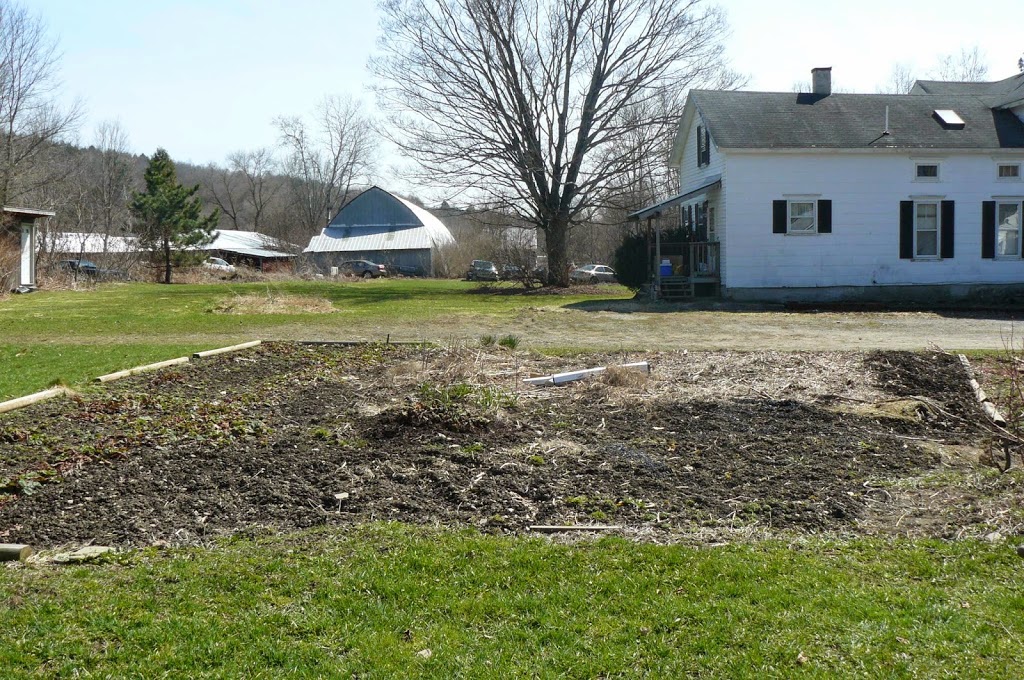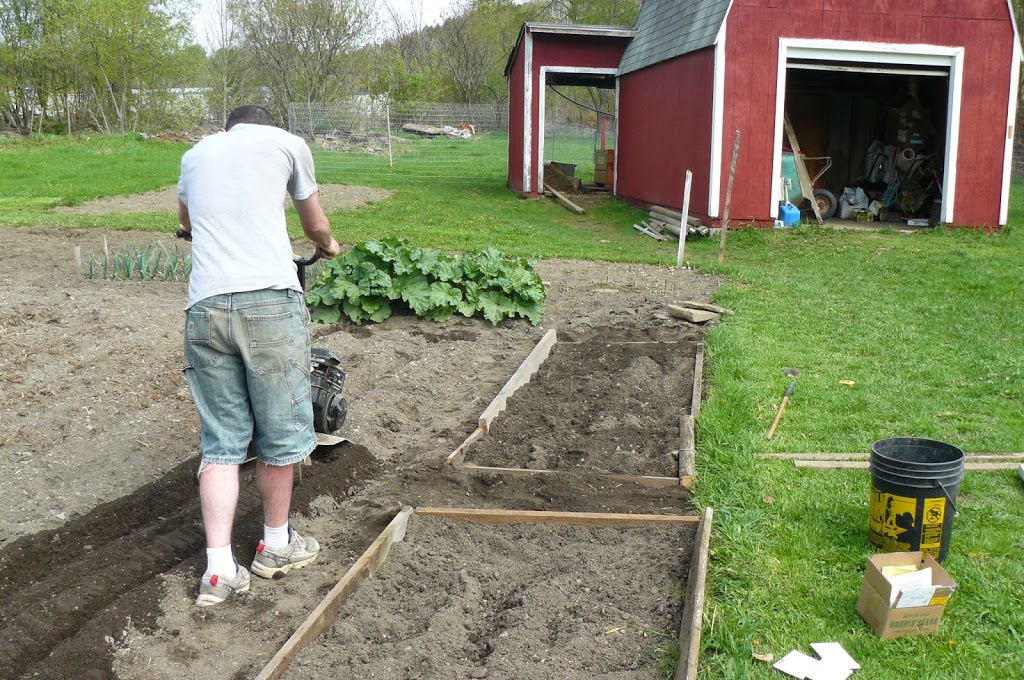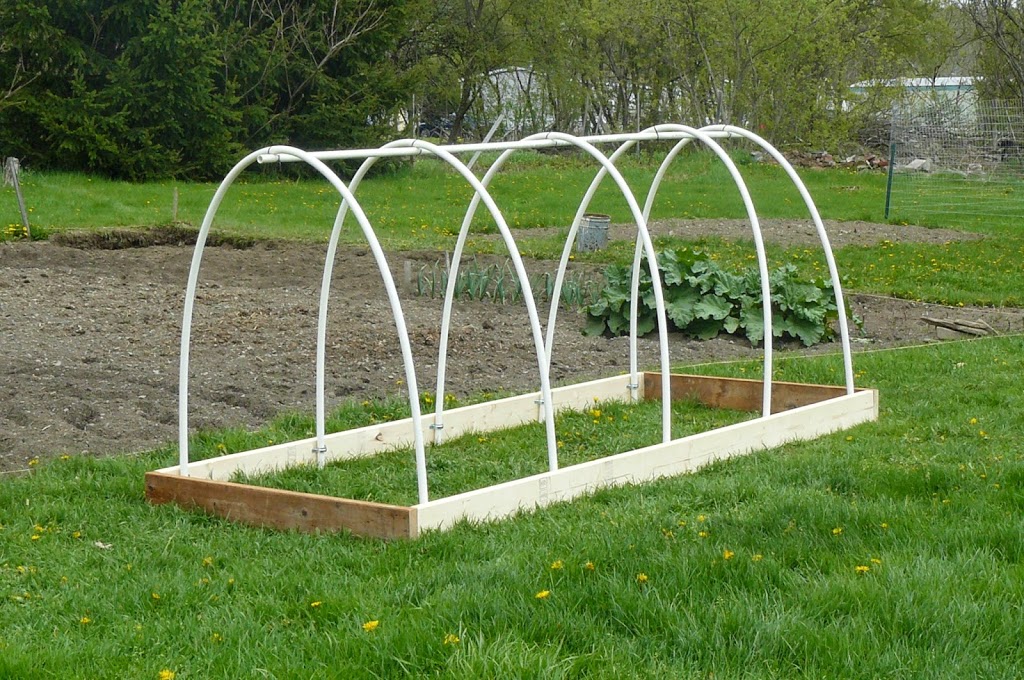One of the main enterprises of the Hust Roost will be fresh produce. Grandpa has been gardening in the backyard since the early 1960’s, and my father and I have both been picking and eating fresh veggies since we could walk. So, while we know how to successfully manage a vegetable garden, we are now faced with growing enough produce to eat and sell. Here are a few strategies for accomplishing just that:
1) Expansion
 |
| the South garden before expansion |
 |
| the South garden after expansion |
Between Grandpa’s garden, which Dad and Cathy have been taking over as Grandpa has downsized each year, and Dad’s garden, we already had over 2,000 square feet of space. That usually amounted to as much as Dad and Cathy could eat and give away to close relatives and friends. This summer, we have
tilled up about 2,000 more square feet. We have quite the impressive rocks from all of the stones we have picked out of the freshly tilled land.
 |
| the North garden after expansion |
 |
| the North garden before expansion |
2) Composting
In order to build up this new soil, we are developing a system for all of our manure and compost. Right now, that is mostly chicken manure, but our future plans will include using rabbit, goat, and pig manure, not to mention that we intend to do vermicomposting. Vermicomposting is basically using a little worm farm to quickly turn manure and compost into an optimal soil.
3) The Use of Beds
 |
| Casey next to some of the beds |
This summer, in the North Garden (that is what we call my Dad’s garden. Grandpa’s is South), we have experimented with the use of beds. The idea is that you have specific areas in your garden for planting that you never have to step in and compress the soil. It is very good for the organisms that help vegetables grow. Next Spring, we will make more beds for the rest of the garden space and put mulch down for the paths in between the beds. It is very useful for organization and weeding, and it is very healthy for the plants. We do intend to have a few sections of garden without beds for potatoes, as they are easier to hill that way, and we also plan on growing a patch of pumpkins and squash out back where they can spread and not get in the way of everything else.
4) Extending the Growing Season
 |
| a “hoop house” before adding the plastic sheet |
It is our hope to build a greenhouse in the next couple of years, but in the meantime, we have already built one hoophouse (basically a mini greenhouse that sits right over a bed) and will build more for the spring. This allows us to plant earlier and keep growing later. We also intend to set up an indoor growing space to begin growing plants (such as tomatoes and brocolli) from seed in the late winter and early spring.
5) Companion Planting and Crop Rotation
We have also been studying (and will continue to research) companion planting and crop rotation. There are many vegetables that you can plant practically right on top of each other, and instead of hampering one another, they actually benefit each other. For example, the Indian method of planting corn, squash, and beans together draws nitrogen into the soil for the corn, allows the beans to grow up the corn, and the squash shades out any potential weeds. With companion planting, we can get more out of each bed and have fewer weeds to pull! As for crop rotation, we can maximize the proper nutrients for each type of vegetable by planting it a year after a crop that leaves a lot of a nutrient that is critical for that specific vegetable. There are whole books written on the best rotation for an average vegetable garden!
6) Cover Crops
Finally, we intend to plant cover crops in the winter to provide a safe haven for the healthy organisms in the soil throughout the cold of winter as well as draw nutrients into the soil. In the summer, a few beds will lie farrow to build up the nutrients as well. However, these cover crops are not useless. They provide feed for livestock, and they can produce multiple cuttings.
Gardening is one aspect that we already know quite a bit about, but the more we research, the more new things we learn. We are excited to try new things to enhance our garden as we produce fresh vegetables, and we are looking forward to continually learning more as we go. There is nothing quite like getting your hands dirty.
